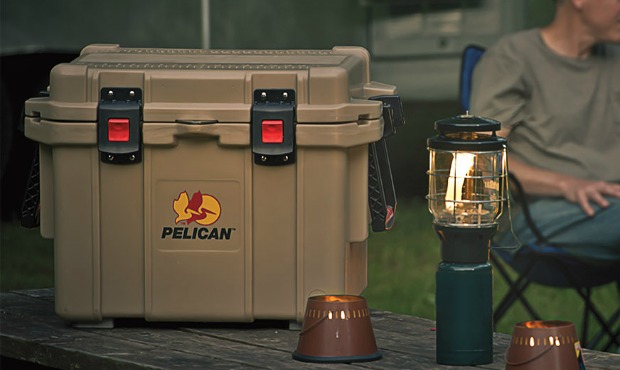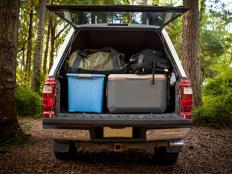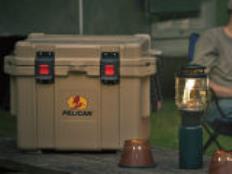
A quality cooler is one of those items you never really know you need until you’re sitting on an uneven stump in the woods, avoiding your rotten deli meat while drinking warm beer around a campfire.
The need to own a cooler is an epiphany almost everyone has at some point in their lives. But before you impulsively buy that Styrofoam box from the corner gas station (or the $300 heavy-duty option, for that matter), there are some factors to consider before you throw your money down the drain.
Find Out What You Need
The cooler aisle of sporting goods and outdoors stores can be daunting to many first-time buyers. The seemingly infinite amount of shapes, sizes and brands can lead consumers to blindly select something that might not suit their needs. Unfortunately, they’ll soon find out that coolers are not a one-size-fits-all purchase.
If you’re camping out overnight, your ideal cooler is far different from what’s needed for a week-long fishing trip. For instance, how long do you need a cooler to hold your ice?
Pelican boasts that its latest coolers can keep ice for up to 10 days. While these heavy-duty coolers are perfect for longer camping, fishing or hunting trips, they may not be necessary to hold drinks during backyard cookouts (unless you really want to impress).
There are several other variables to take into consideration when selecting a cooler.
1. Size
The first thing that will catch your eye is the size of a cooler. While you might not see the harm in ensuring you have room to spare, larger coolers can wind up being impractical and weighing you down on certain adventures.
For those going on quick, overnight camping trips, you don’t want to lug around a cumbersome 100-quart ice chest. Instead, you could probably get away with a dainty but efficient 25-quart cooler.
However, if you’re going to be away from refrigerators and civilization for an extended period of time—and you won’t have to relocate your supplies frequently—you’ll probably want to look at something in the 100-150 quart range.
A too-large cooler can also have negative effects on its ability to hold ice if you’re not filling the entire space with ice and the contents you want to keep cold. Minimizing empty air space will keep your ice and cooler contents colder for longer, so you want to first think about how much you have to keep cold and choose the smallest option that fits your needs.
2. Material and Design
There are typically four types of coolers: plastic, fabric, metal and Styrofoam. If you look at your cooler as an investment, and not some one-off purchase, you can cross Styrofoam off your list.
Fabric coolers, made from a canvas-type synthetic material and insulated with flexible foam, are designed to carry fewer items, such as a packed lunch for a day hike. Metal and plastic coolers, meanwhile, are easily the most durable, with plastic coolers being today’s most popular choice.
Metal coolers, while well insulated, are also heavy, more expensive and sometimes less durable. While your needs certainly determine your cooler, in most cases we recommend going plastic.
3. Construction
No matter what you require in a cooler, getting one that is well constructed is a necessity.
Before you purchase a cooler, lift it and knock on its exterior. If the cooler seems hollow or not well insulated, don’t buy it. The more insulated, the longer it will keep ice.
You’ll also want to closely inspect the cooler lid by tapping on it and opening and closing it to ensure it’s well insulated and seals tightly. Be sure to look for a lid that has metal hinges, as this is a tell-tale sign of a solidly constructed cooler.
4. Portability
In a nutshell, a cooler filled with ice serves as a mobile refrigerator. Thus, portability is a big factor when deciding on a cooler.
While smaller or lighter coolers are naturally more portable, one should not necessarily sacrifice a cooler’s heft—which generally equates to better insulation and keeps ice longer—for ease of transport.
Fortunately, many manufacturers have taken note that such large coolers don’t have to be so cumbersome. Many larger coolers include wheels and handles such as this, which greatly increases their transportability.
Again, a lot of this depends on what you need in a cooler, but never let your ice box slow you down.
5. Durability
Whether tossed around in the bed of a truck, dropped while hiking to a campsite or used as a de facto storage shelf in the garage, most coolers take a beating. To put it simply, you can’t expect to keep a cooler in mint condition through its entire lifespan.
So if you’re going to invest in a cooler, you want to make sure it’s up to the task.
Some heavy-duty coolers advertise a toughness that’s otherworldly. For instance, you can purchase a Pelican cooler that’s certified bear resistant (because bears want your steak just as badly as you do). Just in case you want your next cooler purchase to be your last cooler purchase.
Also, remember not to let those attractive metal coolers cast their sparkly spell on you.
As previously mentioned, a downside to metal coolers is the fact that they’re not as durable as plastic coolers. While they give the appearance of sturdiness, they will dent easily if impacted. Plastic coolers, on the other hand, will better absorb any bumps and hits they take.
 Book your next camping trip
Book your next camping trip








Discuss This Article